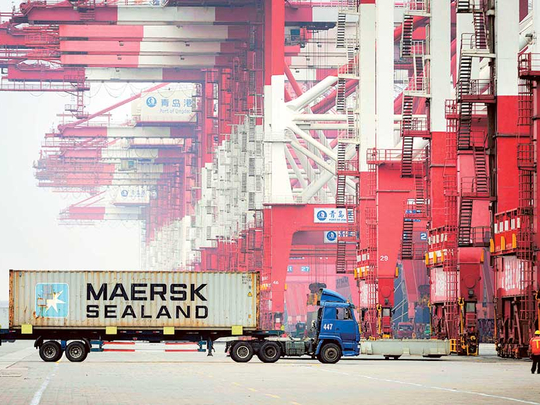
The “Trump Organization” has now morphed into the “Trump Administration”, one that appears to be on track to establish a leadership and public policy apparatus on global economic issues that may well be the most naive in modern US history.
Given the increasingly complex and volatile dynamics shaping international markets today, especially the downdraft in China’s economy, this could not come at a worse time, not only for the US but for the rest of the world economy.
Whether it’s trying to re-position the US as the driver of world economic growth; execute sweeping protectionist measures and rescind existing US trade agreements; re-energise the international competitiveness of US businesses; or backtrack on US commitments to reduce global warming in the name of restoring American sunset industries, what seemed possible to the Trump team at election time, will now soon begin to turn into pipedreams.
At the macro level, the most serious challenge that will face President Trump is the diminished role of the US as the engine of the world economy. The result is that Trump will actually have far less leverage than he currently imagines.
The stage was set in October 2016, when the International Monetary Fund (IMF or “Fund”) downgraded its projections for both the globe’s and US growth. For the world, growth in 2015 was 3.2 per cent. But the IMF’s new forecast indicates global growth for 2016 will turn out to be lower-down to 3.1 per cent.
While US GDP advanced 2.6 per cent in 2015, the Fund believes it will be only 1.6 per cent for 2106. And, for 2017 it will climb only modestly and reach 2.2 per cent — still below the level attained in 2015. More sobering is the fact that these projections are lower than what the IMF forecast just three months earlier, by 0.6- and 0.3 per cent, respectively.
Taken together, these downward revisions are not a terribly promising outlook for the impact of the US on moving the world economy forward. Yet, that’s actually the good news for Trump.
The bad news is that average growth rates of the advanced economies as a whole is still half that of the emerging economies-a pattern underway for two decades but surprisingly has attracted little attention. In fact, emerging markets now account for 60 per cent of the globe’s GDP. (A decade ago it was 50 per cent.)
Worse still for President Trump is that as the global economy has expanded, 80 per cent of that expansion is due to emerging market economies. The advanced countries’ contribution was only 20 per cent.
You may ask, however: Is the robustness of emerging markets really sustainable? After all, over the last decade or more China’s role has been the driver for emerging market growth, yet recently the Chinese economy has been sputtering.
To be sure, China’s current troubles are not going anywhere soon. Indeed, its problems are less cyclical and more structural-owing to the contradictions inherent in the Communist Party’s “socialist market economy”.
Although it’s difficult to fully replace China’s role in this regard, India’s growth now exceeds China’s, and many ASEAN countries are also rapidly expanding; indeed, the latter are increasingly viewed as a ‘China 2.0’ play. At the same time, several countries in Latin America have developed strong track-records.
Even the economic performance of some African countries has surprised many. On the other side of the ledger, a large number of advanced countries remain in the economic doldrums: think Japan and think the EU.
Put simply, the pattern of global economic growth has evolved into a multimodal structure, not a one-economy-dominant environment. This is not your grandfather’s, let alone your father’s, world economy. You don’t have to be a PhD economist (I plead guilty here) to figure out that none of this bodes well for Trump.
His swagger onto the international stage to press his US economic agenda on others may not get him very far.
No country epitomises Trump’s economic challenge more than China. While there’s a better than even chance that China’s current problems will lead to a very hard landing, perhaps even to the extent that a profound political transformation takes place, if Trump proceeds with his stated economic objectives toward Beijing feathers will surely fly.
Unless you were asleep for the last year, how could you miss that during the US presidential campaign, Trump repeatedly threatened China that, if elected, he would slap 45 per cent tariffs on their exports to the US All in the name of bringing back to the US jobs and companies operating abroad.
Implementing such a sizeable, across-the-board tariff on a single country, let alone one of the largest economies-widely stated to be the second biggest-in the world, would be unprecedented in modern history.
Yet unilateral execution of such a policy by a US president is, strictly speaking as a matter of US trade law, quite permissive.
Such a move, however, would quickly generate major legal challenges within the US-perhaps larger, broader and more intense than those involving any economic matter in our lifetime. As a pragmatic matter, it is conceivable that Trump’s trade policy gambit would become tied up in US courts.
At the same time, such a severe U-turn in US trade policy-long held as one of the most progressive in the world-would likely come under fierce attack by the other 163 other countries in the WTO, arguing that the US is in violation of its multilateral trade commitments.
But perhaps the most binding constraint on the new Administration’s trade policy is that it simply would fail to achieve what Trump wants. Here’s a few reasons why.
First, let’s be clear: the US workers whose jobs Trump is trying to protect are, like the rest of us, also consumers. Hello? Increased import tariffs generally mean consumers face higher product prices, not lower ones. Guess which country produces many of the goods purchased by US consumers (aka US workers)?
Second, subsidiaries of US businesses located in China are in fact major exporters of goods to the US. Hello again?
Unless his campaign promises are all for naught, the Trump tariffs, which are effectively taxes, hardly square with the new president’s ambition to unleash the international competitiveness of US business. In fact, how would his trade policy ambitions work to strengthen US workers’ pensions, whose plans typically are invested in US companies’ equities listed on our stock market?
Third, presumably Trump believes his tariffs will induce US subsidiaries in China to immediately pick up their stakes and return to the US. Problem is there are few large US firms in China whose investments were not made based on long-term payoff calculations-a core strategy to make money in China’s opaque economy.
I do not know of a serious US executive in China who thinks any differently. Good luck to Trump in getting these companies back on US soil any time soon.
Fourth, the result actually could be perverse for Trump. US firms in China facing new tariffs for sales back in their “home” market may well sell and/or produce their China-manufactured goods in third-country markets where such “taxes” would not exist and/or labour costs are lower than they are in the US.
In fact, major US businesses already use China as a platform to export goods to markets other than the US. General Electric, for example, indicates this is the case for two-thirds of its production in China. Trump’s proposed policy would only further induce that practice.
Finally, if Trump thinks the Chinese would not retaliate big time against US businesses and products, he is sorely mistaken. Beijing has done so before-or credibly threatened to do so-and would now have a basis on which to take such action and get a sympathetic reaction elsewhere in the world.
Under such circumstances, it would be hard to believe that China’s other trading partners-including the EU and other advanced countries that are major US rivals — would relish, indeed exploit, such a turn of events.
The outcry by US businesses toward the Trump team would come so fast and furious that the Administration would have little choice but to reverse course. Hardly a wise policy position for a new administration.
If history is any guide, Trump’s electorally promised international economic objectives will, in practice, backfire. This time he won’t be “The Closer” he swaggers about.
The writer is CEO, Proa Global Partners LLC, a global investment strategy firm, and faculty member at Johns Hopkins University.












